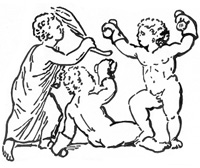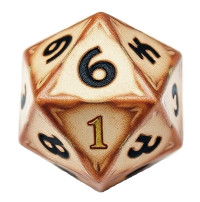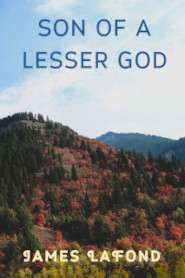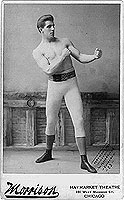I shall here give the best description of the Indians, their way of living, etc. in my power.
It is difficult to guess what may be the number of the Indians scattered up and down our back settlements; but if their own account be true, they amount to many thousands. Be this, however, as it will, they are not to be feared merely on account of their numbers; other circumstances conspire to make them formidable: the English inhabitants, though numerous, are extended over a vast track of land, 500 leagues in length on the sea shore, and for the most part have fixed habitations, the easiest and shortest passages to which the Indians, by continually hunting in the woods, are perfectly well acquainted with; and as their way of making war is by sudden attacks upon exposed places, as soon as they have done the mischief at one place they retire, and either go home by some different rout, or go to some distant place to renew their attacks.
If they are pursued, it is a chance if they do not ensnare their pursuers; or if that be not the case, as soon as they have gained the rivers, so dextrous are they in the use of their canoes, that they presently get out of reach. It is to no purpose to follow them to their settlements; for they can, without much disadvantage, quit their old habitations and betake themselves to new ones ; add to this, that they can be suddenly drawn together from any distance, as they can find their subsistence in travelling from their guns.
No people on earth have a higher sense of liberty, or stronger affection for their relations. When offended they are the most implacable vindictive enemies on earth, for no distance of place or space of time will abate their resentment, but they will watch every opportunity of revenge, and when such opportunity offers, they revenge themselves effectually.
They will sooner sacrifice their own lives for the sake of liberty than humble themselves to the arbitrary control of any person whatsoever. In battle they never submit, and will die rather than be taken prisoners.
Our late transactions in America testify that the friendship of the Indians is to be desired; and the only way to maintain a friendly correspondence with them is by making such propositions to them as will secure their liberties, and be agreeable to their expectations; and not only by keeping these propositions inviolable as well in time of peace as in time of war, but also renewing our treaties with them from time to time, for they are very jealous and tenacious of an affront or neglect. They are very proud, and love to be esteemed. In time of peace they live upon what they get of the white people, for which they barter skins, furs, etc. Their clothing, and every thing else they want, such as arms, they get in the same manner. In war time, they live upon what they can procure by their gun, and if that fails, upon roots, fruits, herbs, and other vegetables of the natural produce of the earth.
They have never the foresight to provide necessaries for themselves; they look only to the present moment, and leave to-morrow to provide for itself.
They eat of every wild beast which they kill, with- out distinction. They always prefer game to vegetables; but when they cannot get venison, they live on roots, fruits, and herbs. They destroy a great deal of meat at a time, when they have it in their power, and when they leave any, be it ever such a great quantity, it is ten to one if any of them will take the trouble to carry a pound of it, but will rather leave it behind them [1]: yet, notwithstanding this extravagance, such are their tempers, and they are so inured to hardships, that if they cannot conveniently get at food, they can and actually do fast sometimes for near a week together, and yet are as active as if they had lived regularly.
All their spare time is taken up in contriving schemes to succeed in their intended expeditions. They can never be taken in a pursuit by any European. They will travel seventy miles a-day [2], and continue for months together, as I have reason to know from experience: and they are sure to bring their pursuers into a snare, if they are not wary, and have some Indians on their side to beat the bushes.
When they are overtaken with sleep, they light a great fire: which prevents the wild beasts from failing upon them, for wild beasts have a natural aversion to fire; nor is it easy for an enemy to discover them in this condition; for the country is one continued tract of thick wood, overgrown with brushwood, so that you cannot see the fire till you be within a few yards of it. They having nothing covering them from the inclemency of the weather but a blanket put upon them, something in the shape of a Highlanders plaid.
And further, to prevent their being long observed by their pursuers, or to be seen too soon when they have a mind to attack any plantation, they paint themselves [3] of the same colour with the trees among which they hide themselves.
When they are to attacking a plantation [4], they never come out till night, and then they rush instantly upon the farms, etc. and destroy every thing, as well men, women, and children, as beasts: then they fall to plunder, and return to their lurking holes till another opportunity of plunder happens, when they renew their attack in the same manner; so that if some method is not taken to draw them into our interest, our colonies will be in a continual alarm, and the country will soon become desolate; for nobody will venture their lives to settle on the back parts, unless the Indians are our friends.
The Indian manner of fighting is quite different from that of other nations. They industriously avoid all open engagements; and, besides ambuscades, their principal way is bush-fighting, in the exercise of which they are very dextrous; for the back country being one continued wood, except some few spots cleared for the purpose of husbandry by our back settlers, the Indians squat themselves down behind the trees, and fire their muskets at the enemy; if the enemy advances, then they retreat behind other trees, and fire in the same manner; and as they are good marksmen, they never fire in vain, whereas their pursuers seldom hit.
Notwithstanding the political schemes of France are nearly brought to a period, yet if the Indians are not satisfied with the conclusion of a peace between us and the French as to America, I mean, unless they are fairly dealt with, we shall gain but little by all our conquests; for it is the friendship of the Indians that will make Canada valuable to us.
We have already more lands than we are able to manage; but the advantage, nay, the necessity of keeping Canada I have already shewn, and therefore I shall go on with my account of the Indians.
Notes
[1] Hauling what could be got en route slows the march, and there is also the leaving of food for totemic animals to be considered.
[2] The best marching time in infantry history. Alexander’s foot companions, the most successful foot soldiers in history, made 60 miles per day in open terrain, while his Agriannians were probably a match for the Iroquois.
[3] It is well known among military historians that the modern method of small unit movement and special operations warfare, typified by special operations soldiers and combat infantryman utilizing terrain for cover, came down to the modern military through the American Indian, the American Frontiersmen [emulating Indians], the British riflemen of the Napoleonic Wars [trained by Indians], and the German infantryman of late WWI [consciously patterned on fighting “in Indian file.”] This way of war is based on hunting, not mass battle on prepared grounds, and since the arriving Europeans had zero experience hunting in their domesticated homelands, learned the entirety of the now extant American hunting arts from the Natives. By 1900 and the Boer War in South Africa—indeed at the end of the American Civil War at Petersburg in 1864—the modern battlefield had become so deadly, that any type of maneuver other than in the style of the primitive warrior was tantamount to suicide.
[4] However, on discovering through the account of Peter and others of his era, that North America was originally conceived and settled as a series of slave plantations consisting of masters and servants, and also of communistic religious congregations and military bases, and reading his recollection of the personal freedom and attachment to liberty among the Natives, as well as taking into account that the members of the Boston Tea Party raid dressed as Indians, one wonders if America’s once vaunted, once proud, and now utterly reviled, dedication to liberty was not borrowed from the Indian?
Has not the peculiar American dedication to individual liberty ruffled many a European feather?
Is not the control of postmodern American media and political systems by groups wedded to the European collective ethos’ of communism, liberalism and fascism, and the cultural clash between these “coastal politicians” and “leftist media” and rural white Americans who believe, like the Natives described by Peter, in living by “the gun” rather than in “submission” to “arbitrary control,” a continuation of the struggle Peter describes in his book?











>one wonders if America’s once vaunted, once proud, and now utterly reviled, dedication to liberty was not borrowed from the Indian?
William James Sidis, who had the highest IQ in America (was the product of Russian Jеws+turn of the century Harvard), wrote a book about this: en.wikipedia.org/wiki/The_Tribes_and_the_States
sidis.net
Thank you so much, B.